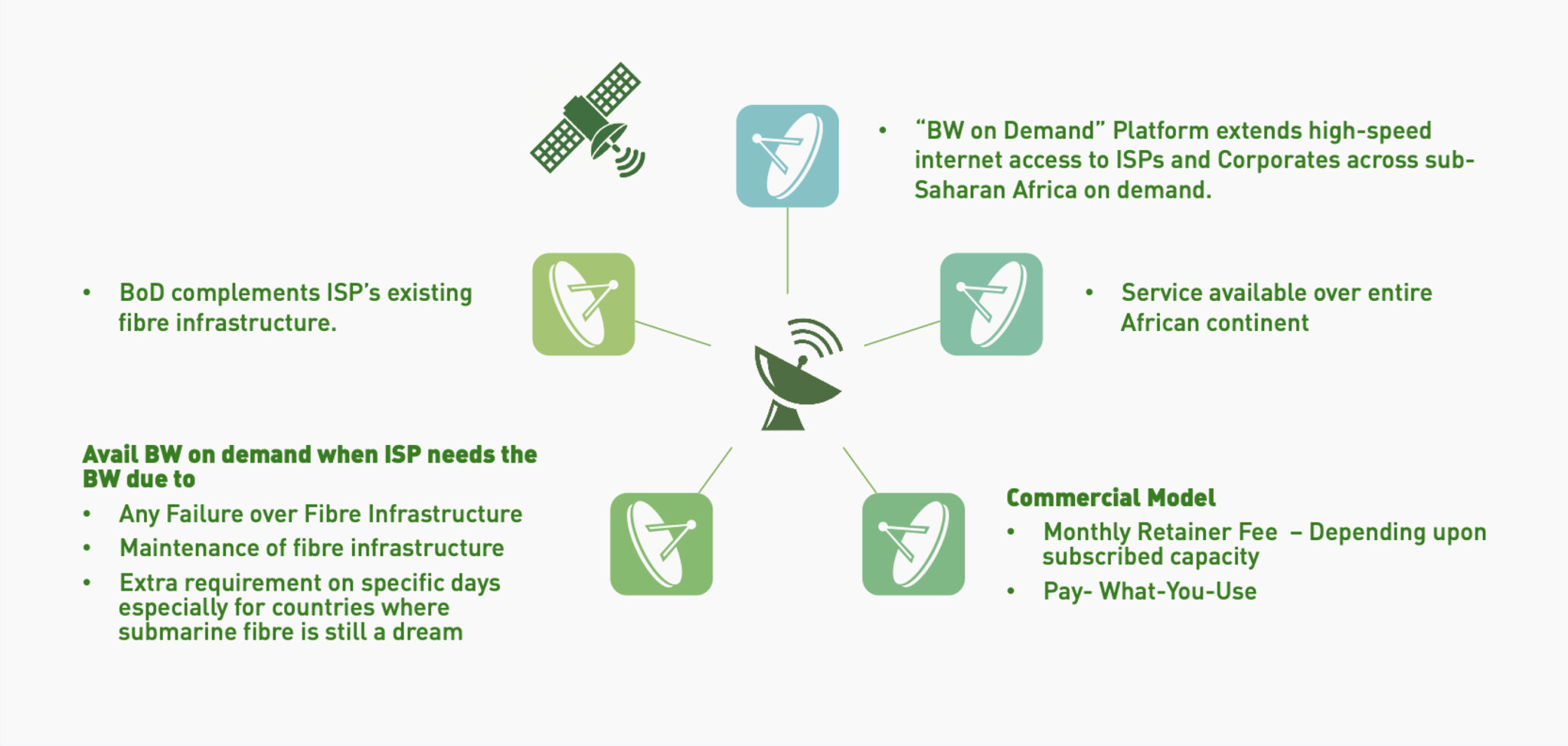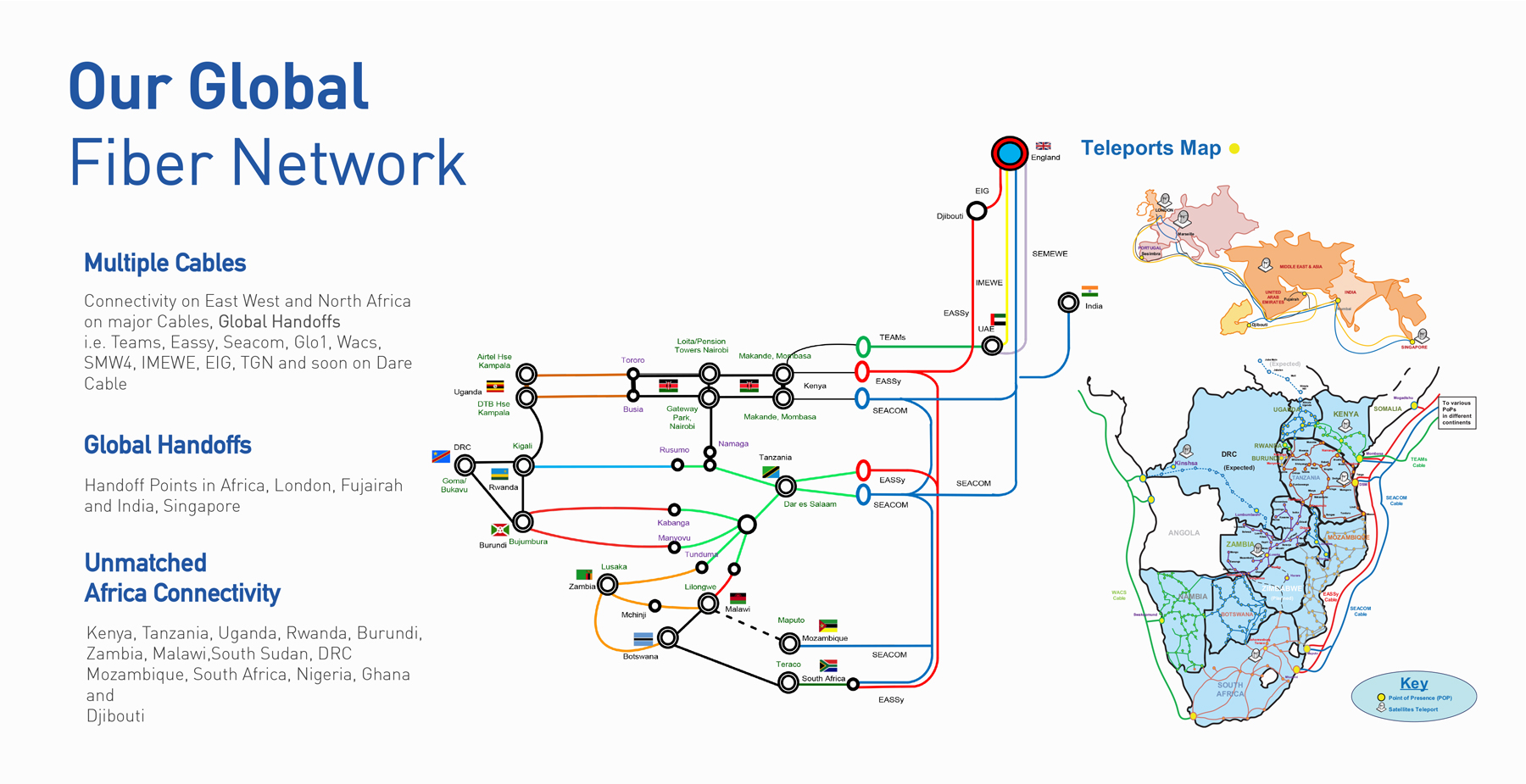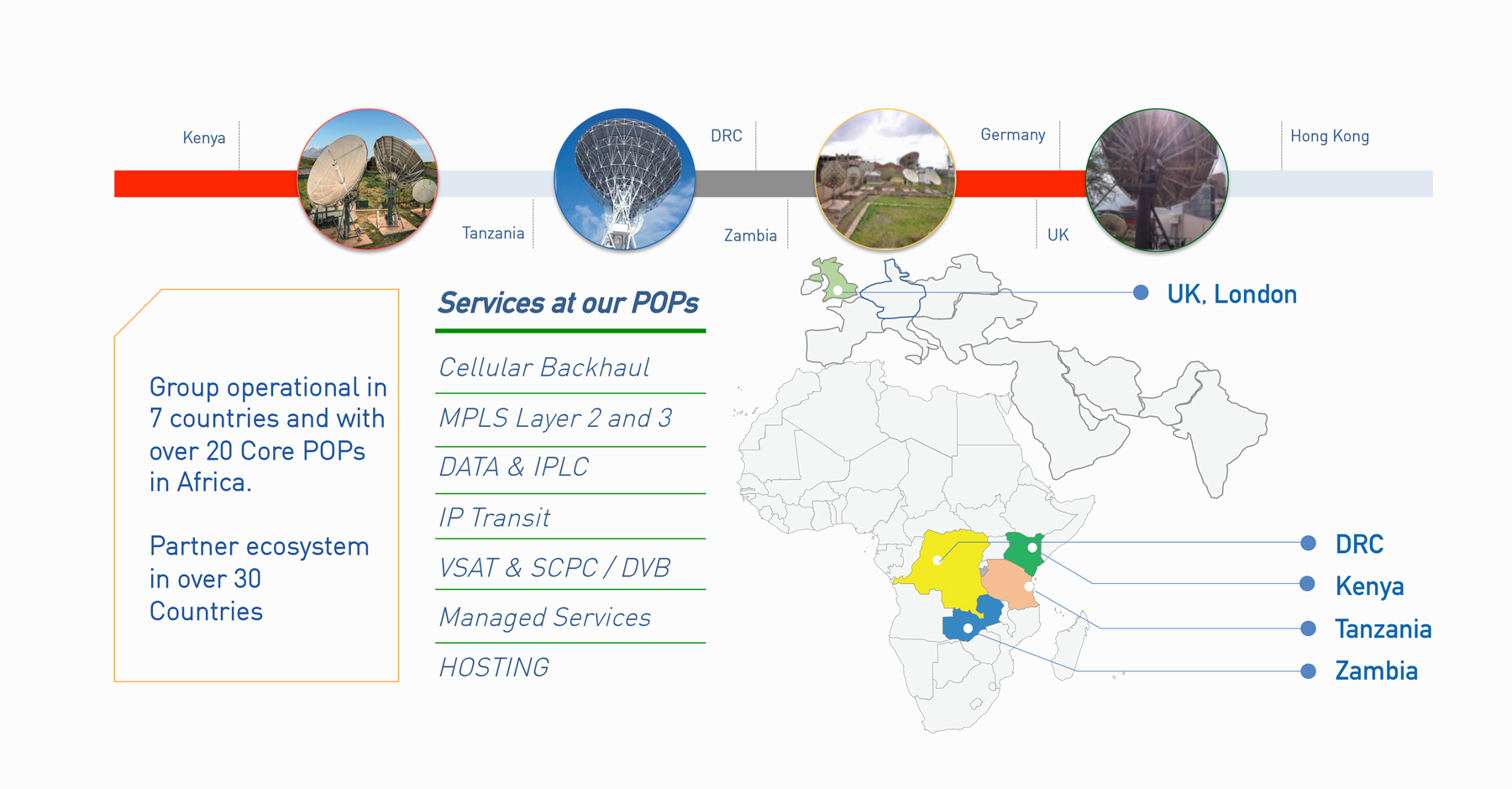TELEPORT & TERRESTRIAL INFRASTRUCTURE
VSAT/Satellite Connectivity:
Fibsat provides secured and reliable VSAT services across Africa on different platforms/frequencies including C band, KU band and KA band.
Our services also ranges from SCPC platform to the TDM/TDMA platforms.
We have Internet, VPN, Enterprise Applications, VOIP, Video Conferencing, Intranet, Wide Area Network and other data services runs on our secured and reliable VSAT Network.
IP Trunking Services
Highlights of our IP Trunking services:
- Dependable satellite internet connectivity with global peering provisions at UK & Germany, helping minimize the needed data hops to reach targeted destination
- Our Satellite IP Trunking encompasses internet access at the remotest of areas.
- Based on a unique point-to-point satellite link between Fibsat teleports and VSAT terminal at the premise.
- Customized solutions for primary links for sites with no connectivity
- Solutions for on demand back up at a flat price on daily/weekly/Monthly basis.
- Complete freedom from end-to-end responsibility.
- Fibsat offers economical Trunking, using C-band capacity on the satellite
Bandwidth on Demand:
Fibsat provides Bandwidth on Demand services on VSAT to its subscribers. Our Bandwidth on Demand” (BoD) Platform extends high-speed internet access to ISPs and Corporates across sub- Saharan Africa on demand. BoD complements ISP’s existing fibre infrastructure.
Avail BW on demand when ISP needs the BW due to
- Any Failure over Fibre Infrastructure
- Maintenance of fibre infrastructure
- Extra requirement on specific days especially for countries where submarine fibre is not available
The Bandwidth on Demand service comes with flexible commercial models for our subscribers including:
- Monthly Retainer Fee – Depending upon subscribed capacity
- Pay- What-You-Use
- ‘Always on’ access
- Avail bandwidth on demand basis.

Incredible Connectivity with IP Trunking.

EUTELSAT KONNECT SAT at 7°E
SkiSAT platform offers Internet Access Services in 40 countries in sub-Saharan Africa.
The services are provisioned by Internet Gateway that include the Earth Stations, the baseband Equipment, the Networking Infrastructure and the Local Loop Fibre Connection.
ISAT will add its terrestrial network and by adding all its POP’s in Europe, Africa and beyond to support increase in internet traffic and different user applications like VPN.
This network is comprised of several PoP servers providing:
- Connectivity across all internet gateways.
- Access to external providers for content injection purposes
- Internet transit
Each PoP node can support up to 20 Gbps. It balances and protects the user traffic accessing the Internet, allowing the most convenient paths to destination and, finally, supporting asymmetric traffic flows.
To ensure highly reliable communications within the network, even in case of connectivity failure or traffic congestion, differentiated or protected links and redundant equipment were set up.
All operation, administration, maintenance and provisioning activities are remotely performed through the Network Operation Centre (NOC) located in UAE and Kenya.

Service Access platform
The Service Access Domain on SkiSAT is built on the Hughes Jupiter 2.5 technology. It allows the End-User premises to connect to the network.
The Hughes HT2000 modem adopts the most recent technology for modulation on Forward channel, i.e. DVB-S2X wideband forward channel, and was engineered for the highest possible capacity and efficiency with HTS Satellites. The channel access method is MF-TDMA.
The system is comprised of a modem, the PEP system (i.e., the Performance Enhancement Proxy, the IP routers, and the provisioning system (i.e., DHCP, LDAP and Radius servers).
The Terrestrial Transport Network for the current services was designed based on the Next Generation Network concepts, according to the ITU-T
Recommendation Y.2001 (12/2004), in order to:
- Fully optimize the broadband coverage in sub-Saharan Africa
- Provide high-capacity interconnections across all internet gateway via a high-capacity, highly reliable fibre ring
Facilitate:
- Connection to Content/Application Providers
- Inter-exchange points with telecom operators at main international PoPs
The Network design was based on the principle of one single transport network (all over IP) and is aimed at delivering layer-3 IP services. The Network is built on a Multi-Protocol Label Switching (MPLS) system, providing multi-protocol traffic carriage over the network, traffic engineering capabilities and VPN support in order to isolate and prioritize traffic across different entities. A map of the Network topology appears in Figure below.

Table – Current Network – Main Locations

Internet Transit for End-Users is managed through the Paris, UK nodes


HTS Satellite: New ground segment, same technology and architecture
The future architecture of the Internet access service with HTS satellite is shown in the following figure:

End-User Customer premises Equipment (CPE)
The key elements of a typical End-User Domain are:
- The Outdoor Unit (Antenna and Transceiver), that grants access to the satellite interface. The Outdoor Unit may be in several sizes, as follows:
Basic Outdoor Unit:
- Antenna dish size: 74 cm
- 1W amplifier
- Rx/Tx circular polarization
The Bandwidth on Demand service comes with flexible commercial models for our subscribers including:
- Antenna dish size: 90cm and 120 cm
- 2W amplifier
- The User Terminal, i.e., the Hughes Jupiter 2 modem. This modem carries all the necessary features to connect the satellite interface and IP based End-to-End services. The User Terminal is illustrated below.

